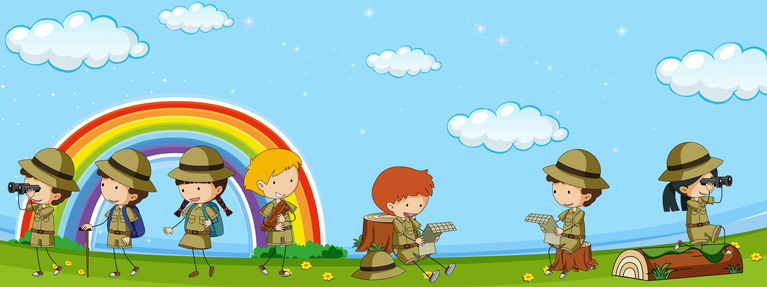Pardon the interruption. I have a question.
The question is prompted by a newspaper article I saw recently. Since the question is likely to be perceived as politically incorrect — or, at the very least, as something like gender-insensitive, rather than pragmatic, which is the perspective from which I ask the question — it’s likely to make me terrifically unpopular. So, if LinkedIn has some sort of algorithm to detect and preclude posts from those suspected of being curmudgeons, oafs, or troglodytes, it’s been nice knowing you.
The headline of the article that prompts my question reads, “Girl Scouts add 30 new badges in robotics, science and engineering.” This is the part of the article that makes me curious:
The Girl Scouts of the USA kicked off its summer recruiting season … by announcing 30 new badges that will get girls ages five to 18 building robots, designing balloon-powered cars and mastering the college application process … The new Girl Scouts badges and programs have been in the works for more than a year now — so before the Boy Scouts opened to girls.
Here’s my question: If girls can be boys (and vice versa) and girls can be Boy Scouts (but not vice versa), why do we need two organizations? Why don’t we just call it Scouts and be one, happy, genderless, homogenous, intersectional family?
My Mission
Along similar lines, and though few people would believe it, I harbor a lifelong ambition to belong to the Daughters of the American Revolution (DAR). It’s true. And why not? By these criteria, I clearly qualify:
DAR members come from a variety of backgrounds and interests, but all share a common bond of having an ancestor who helped contribute to securing the independence of the United States of America. Any woman 18 years or older, regardless of race, religion or ethnic background, who can prove lineal descent from a patriot of the American Revolution is eligible to join.
As a matter of fact, my great-great-great-great uncle thrice removed, Phineas Aloysius O’Brien, was a member of Sparhawk’s Regiment of Militia (aka the 7th Worcester County Militia Regiment). After being dispatched to Saratoga, New York, to serve under the command of General Horatio Gates against British General John Burgoyne, Uncle Phineas sneaked into Burgoyne’s camp one night and put a Yellow Sac Spider in one of Burgoyne’s boots.
During the next day’s battle, on October 17, 1777, the spider, the bite of which is excruciatingly painful, chomped Burgoyne’s heel, causing him to exclaim, “Shoot!” On hearing the exclamation, all of the Redcoats under Burgoyne’s command fired their muskets, rendering the muskets useless until they could be painstakingly re-loaded. At that point, Sparhawk’s Regiment surrounded the effectively disarmed Redcoats, Burgoyne’s Army surrendered, and the Regiment was disbanded the next day, enabling Uncle Phineas to return to his career as a cross-dressing chiropodist.
My Case
Okay. I know what you’re thinking: Gender hadn’t been demoted from biological fact to social construct in the 1700s. So, Uncle Phieas’s cross-dressing doesn’t qualify him as a woman, chronologically speaking. That’s true. But I’m not trying to ride the hermaphroditic coattails of Uncle Phineas into the DAR. Here’s why:
Since gender (and race) have now, indeed, been reduced to social constructs in these Enlightened Times, all I have to do is identify as the great-great-great-great niece thrice removed of Uncle Phineas (which I do), and I’m a shoo-in, right? And any attempt to deny my right to belong to the DAR would necessarily, therefore, constitute discrimination, n’est pas?
I’m telling you, I’m going to be the Belle of the Ball and the life of the party at the 128th Continental Congress this year.
After that, I think I’ll join the Scouts.

